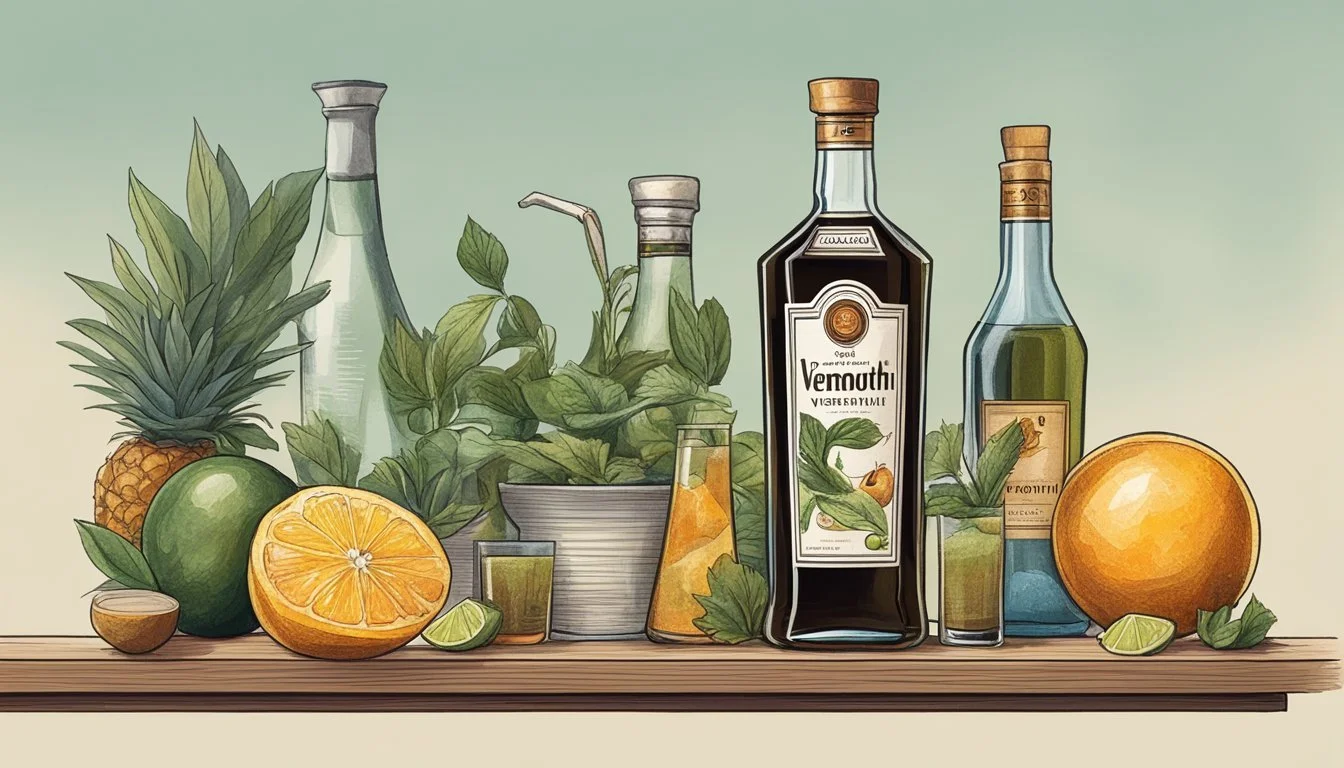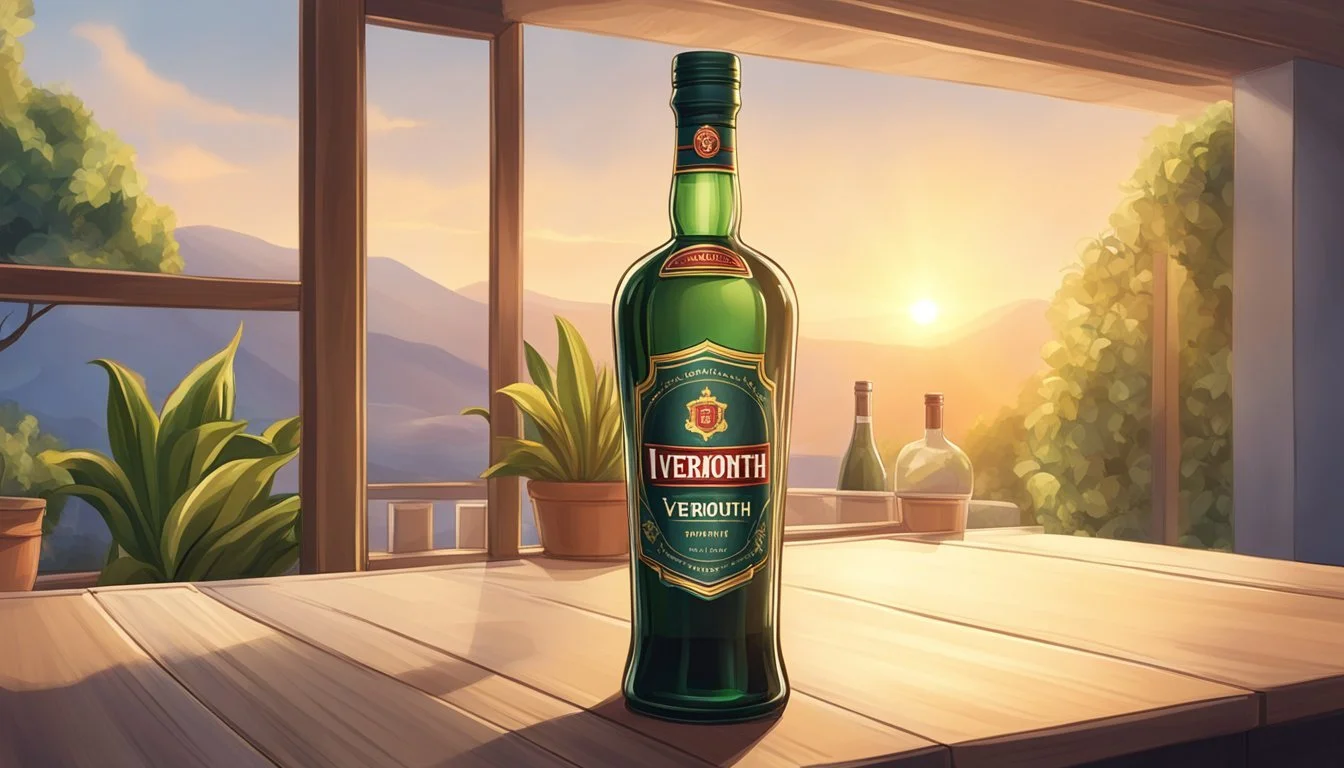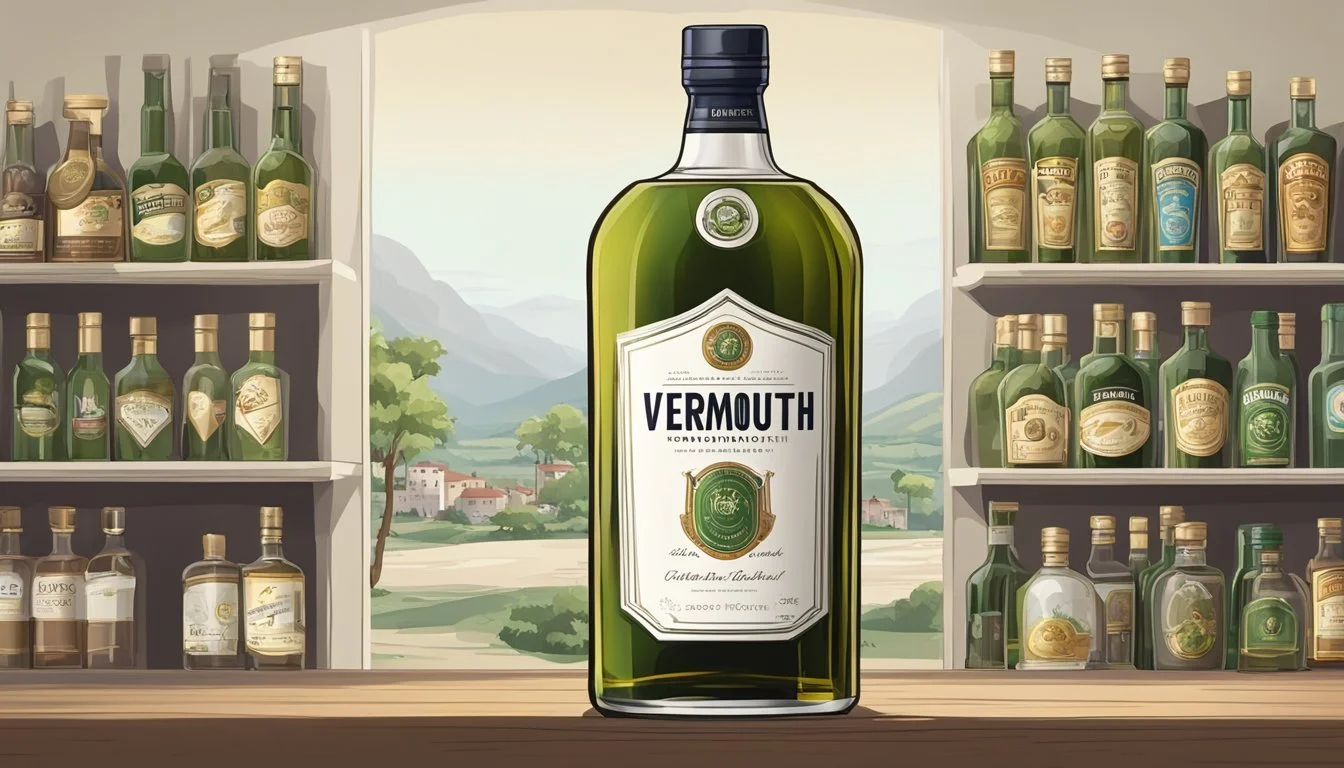Does Vermouth Go Bad?
Understanding Shelf Life and Storage Tips
Vermouth is a fortified wine that has been flavored with various botanicals, and like many wines, it is subject to change over time. It does not go bad in the same sense that perishable food does, but it can deteriorate in terms of flavor and aroma, particularly after opening. The shelf life of an unopened bottle of vermouth can be several years, and this longevity can be attributed to the fortification process, where spirits are added to wine, enhancing its stability.
Once opened, the timeline for enjoying vermouth at its best is significantly shorter. Exposure to air leads to oxidation, which gradually alters the vermouth’s character, diminishing its nuanced flavors and aromatics. To maintain its quality, open bottles of vermouth are best stored in the refrigerator and consumed within a few weeks to a couple of months. The exact duration will vary depending on storage conditions and the vermouth's quality. Keeping the cap tightly sealed and the bottle upright will help to extend its shelf life.
Despite the effects of time and oxidation, vermouth is unlikely to become unsafe to consume. Instead, signs of degradation are typically a less vibrant flavor profile and the presence of off-flavors. In cocktails, where vermouth is often a critical component for balance and complexity, using a freshly opened bottle can be key to achieving the desired taste.
Understanding Vermouth
Vermouth, a fortified wine with a complex flavor profile, is distinguished by its aromatic blend of herbs and spices. This section delves into its identity, varieties, and composition.
What Is Vermouth?
Vermouth is an aromatized, fortified wine infused with various botanicals—including herbs, spices, and other natural flavors, which grants it a unique aroma and taste. It originated in Italy and has since become a staple in many cocktails.
Types of Vermouth
Two primary types of vermouth are well-recognized:
Sweet Vermouth: Also known as red or Italian vermouth, it is often richer and contains more sugar. Sweet vermouth is noted for its sweet taste with a robust flavor.
Dry Vermouth: Commonly referred to as white or French vermouth, it is fortified wine with less sugar and is characterized by a dry, herbal taste.
Composition and Varieties
The composition of vermouth hinges on its base wine and the specific mixture of botanicals, which can number in the dozens for each brand. These may include:
Herbs like wormwood, mint, thyme
Spices such as cinnamon or cardamom
Other botanicals like chamomile or citrus peel
These ingredients shape a vermouth's distinctive flavor profile and aroma, resulting in a spectrum of varieties suited for different palates and cocktails.
Storing Vermouth
Proper storage of vermouth can significantly affect its shelf life and flavor integrity. Attention to temperature, light exposure, and airtight sealing is crucial to maintain vermouth's quality.
Ideal Storage Conditions
To preserve vermouth's quality, one should store it in a cool and dark place. These conditions help prevent the oxidation process that can alter the flavor profile of vermouth. A storage environment around 55-60°F (about 13-16°C) is considered optimal.
Refrigeration and Temperature Control
Keeping vermouth refrigerated once opened is important; a refrigerator provides a stable environment. It is recommended to store vermouth at a consistent temperature to prevent the degeneration of its subtle flavors. The ideal refrigerator temperature should range between 35-40°F (1.7-4.4°C).
Protecting from Light and Heat
Exposure to light and heat can lead to the deterioration of vermouth. Storing it away from sunlight and any direct heat source will help to maintain its flavor and extend its shelf life. Cupboards or a dedicated wine fridge away from heat-generating appliances are favorable options.
Sealing and Air Exposure
After opening, vermouth must be sealed tightly with its original cap or an airtight stopper to minimize its contact with air. Limiting air exposure is essential because oxygen can induce oxidation, which adversely affects taste and aroma. For additional protection, specialized inert gas preservation systems can also be used to envelop the vermouth, further extending its shelf life when refrigerated.
The Shelf Life of Vermouth
Vermouth's shelf life is influenced by whether the bottle remains unopened or not. Proper storage affects its longevity, whether it's for neat consumption or as a part of cocktails.
Unopened Vermouth Shelf Life
Shelf Life: An unopened bottle of vermouth typically remains at peak quality for 3 to 4 years if stored properly at room temperature. Here are specifics for the two main types:
Dry Vermouth: Can last up to 3-4 years.
Sweet Vermouth: Similarly, can last up to 3-4 years.
Expiration Date: The expiration date on the bottle is often a conservative estimate. A vermouth's true shelf life can extend beyond this date without spoiling, but its flavors may diminish.
Shelf Life After Opening
Once opened, the clock starts ticking faster for vermouth's optimal taste and quality:
Opened Bottle Storage:
Dry Vermouth: Best consumed within 4-6 months when refrigerated.
Sweet Vermouth: Maintains quality for about 3-4 months under refrigeration.
The environment plays a role in post-opening longevity. Refrigeration can help prolong vermouth's life, but it's essential to keep an eye on any changes in smell, taste, or appearance that might indicate spoilage.
Signs of Spoilage
When it comes to vermouth, being aware of spoilage signs ensures one can avoid consuming a subpar product. They should look out for changes in visual appearance, smell, and taste.
Visual and Olfactory Indicators
One can detect spoilage in vermouth by paying attention to visual cues such as color changes or the presence of mold. Typically, a vermouth in good condition should have a clear and vibrant appearance. The presence of mold, cloudiness, or a significant dulling of color often indicates that the vermouth has gone bad.
The smell of vermouth is also a telling sign. A fresh bottle should have a pleasant aromatic profile characteristic of its ingredients. If the vermouth emits an acidic or vinegar-like smell, it suggests that it may have started to spoil. This off-odor is a result of acetic acid bacteria converting the alcohol into vinegar, compromising the quality of the vermouth.
Taste and Texture Changes
If one decides to taste the vermouth, sourness is a primary indicator of spoilage. A taste test should reveal a complex blend of flavors, but if the vermouth instead has a sharp, acidic taste, it is past its prime. One should also note the texture—vermouth should typically be smooth, and any unexpected texture change can be a sign of spoilage.
Due to the presence of alcohol and aromatic herbs designed to deter microbial growth, vermouth doesn't spoil easily. However, if these changes in taste, texture, or smell are noticeable, it's advised that the vermouth be discarded to avoid consumption of a potentially spoiled product.
Consumption and Usage
As a fortified wine, vermouth plays a versatile role in both the beverage and culinary world. Its usage is guided by its ability to enhance flavors in a variety of contexts, with an emphasis on freshness to maintain its quality.
In Cocktails and Beverages
Vermouth is a staple ingredient in many classic cocktails. A dry vermouth is essential to a crisp Martini, while sweet vermouth is a key component in a smooth Manhattan. For a Negroni, an equal balance of sweet vermouth with gin and Campari creates a harmonious blend of flavors. To ensure optimal taste, mixologists often emphasize the importance of using fresh vermouth to achieve the desired profile in these drinks.
Martini: 1 part dry vermouth, 5 parts gin, garnished with an olive or lemon twist.
Manhattan: 1 part sweet vermouth, 2 parts whiskey, bitters, and a cherry.
Negroni: 1 part sweet vermouth, 1 part gin, 1 part Campari, garnished with an orange peel.
Culinary Applications
In cooking, vermouth can be utilized much like wine to add a sophisticated layer of flavor to dishes. It is particularly effective for deglazing pans to create sauces and in the preparation of rich stews. Chefs may also incorporate vermouth into salad dressings or use it in baking to infuse pastries with its unique flavors. When cooking with vermouth, selecting a bottle of reputable quality is crucial, as it contributes directly to the taste of the final dish.
Deglazing: Add vermouth after sautéing to lift the fond and form a base for sauces.
Stews: Include vermouth during the braising process to add depth.
Dressings: Whisk vermouth with oils and seasonings for a flavor boost.
Choosing the Right Vermouth for the Occasion
Selecting the proper vermouth is key to its applications. For cocktails like martinis, a high-quality dry vermouth is recommended. Sweet vermouth is more suited to darker spirits and rich, bold cocktails such as Manhattans. The choice of vermouth should be informed by the specific flavors that the occasion or recipe demands.
Cocktails: Choose a dry vermouth for lighter drinks and a sweet vermouth for more robust mixes.
Cooking: Opt for a fresh, quality vermouth that complements the dish’s flavor palette.
Practical Tips
Maintaining the quality of vermouth hinges on proper storage and timely replacement. Ensuring each bottle is sealed and stored correctly can extend its shelf life, offering a more delightful experience upon consumption.
How to Properly Seal and Store Opened Bottles
After opening a bottle of vermouth, it should be sealed tightly. Using the original cork or a wine stopper, ensure the container is airtight. Store the bottle upright in a cool, dark place. If possible, write the opening date on the label for future reference. Refrigeration is recommended for opened bottles, which can preserve the contents for up to 8 weeks for optimal taste.
Seal: Airtight with original cork or wine stopper
Position: Store upright to prevent leaks and oxidation
Location: In a refrigerator, away from light
Label: Mark the opening date on the bottle
When to Replace Your Vermouth
Vermouth should be consumed within a reasonable time frame after opening to enjoy its full flavor. As a rule of thumb, replace dry vermouth within 3-4 months and sweet vermouth within 4-6 months when stored refrigerated. If the taste or smell is noticeably off, or if it's significantly past the best-by date, it's time to replace the bottle.
Dry Vermouth: Up to 3-4 months
Sweet Vermouth: Up to 4-6 months
Past Best-By Date: If significantly past, consider replacement
Freezing Vermouth
Freezing vermouth is not typically recommended, as it can alter the flavor profile and composition due to the expansion of liquids. If space and conditions allow, it is best to store vermouth in the fridge instead. However, if one must freeze vermouth, ensure it's in a suitable container that can accommodate this expansion.
Recommendation: Avoid freezing; refrigerate instead
Container: Use suitable container if freezing is necessary






